Pipeline inspection with a submersible ROV
SSM designs for Iberdrola the first robot to optimise the cleaning of large pipes in thermal power plants
June 2023. Reading time: 8 minutes
Spanish start-up SubSea Mechatronics (SSM) is working, in collaboration with Iberdrola, on the development of a submersible ROV capable of travelling through the cooling pipes of our thermal power plants, providing positioning and visual documentation for inspection and cleaning accumulated sediments or biofouling that hinder the correct flow of water.
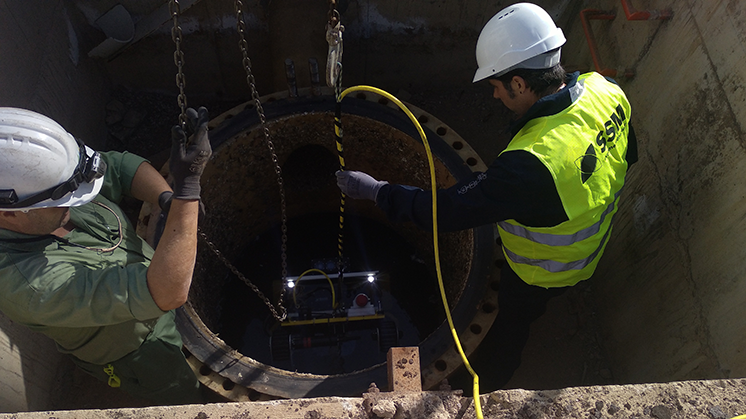
SubSea Mechatronics personnel testing an ROV inside a pipeline.
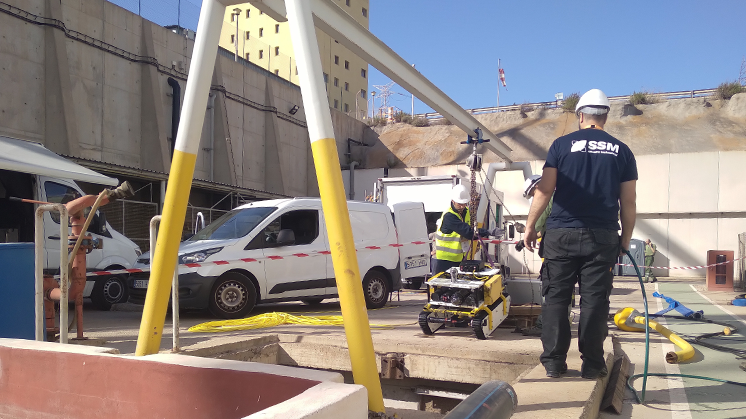
SubSea Mechatronics personnel testing an ROV inside a pipeline.
The Spanish company SubSea Mechatronics (SSM), winner of the PERSEO NewTech Challenge Inspection and cleaning of large pipelines in 2022, has designed a pioneering underwater ROV (short for "remotely operated vehicle"), christened SOLEA, which will allow Iberdrola's team to inspect and clean the large pipelines of our thermal power generation plants under the highest standards of quality and safety. A pilot project that entered its second phase in 2023 with the aim of continuing to mature until a commercial and scalable solution is ready in 2024.
One of the fundamental characteristics of combined cycle thermal power plants is the use of water in the cooling circuit, which in most cases consists of recirculating water from natural sources such as rivers, seas and oceans. Among the plant's maintenance operations is the inspection and cleaning of sediments, also known as biofouling, from the large pipes through which this water flows, which can be several hundred metres long.
The ROV designed by SSM makes it possible to replace the traditional way of carrying out these maintenance and cleaning or dredging operations, executed to date by divers, with the limitations and potential risks that this entails. Thanks to robotics and the latest technology, some critical tasks can be performed with greater precision and in less time, which also means less plant downtime and less disruption to the end consumer.
"The idea with the application of robotics in cases like this is to minimise risk situations for people, and the integration of a vehicle like SOLEA in the plant's recurring processes will have a drastic impact on this."
Darío Sosa Cabrera, CEO of SubSea Mechatronics
The CEO of SubSea Mechatronics External link, opens in new window., Darío Sosa Cabrera, tells us in an interview more details about the work of the Canary Islands start-up, its experience in the energy sector and its innovation project with an international company such as Iberdrola. A collaboration structured through the PERSEO start-up programme and framed within our Group's commitment to innovation as a way of creating sustainable value in society.
External link, opens in new window., Darío Sosa Cabrera, tells us in an interview more details about the work of the Canary Islands start-up, its experience in the energy sector and its innovation project with an international company such as Iberdrola. A collaboration structured through the PERSEO start-up programme and framed within our Group's commitment to innovation as a way of creating sustainable value in society.
With which innovative solution did you win the NewTech Challenge for Large Pipe Inspection and Cleaning?
With extensive experience in complex underwater research and ROV development tasks, SSM made a clear plan on what type of equipment was required to complete the challenge of inspecting and cleaning large pipelines.
This was no ordinary underwater research task, as it included several factors that make the use of conventional equipment ineffective. SSM therefore proposed a customised solution comprising selected equipment such as the vehicle, imaging technology and positioning.
What was this extraordinary context that required a new application of your technology?
In power plants, energy production generates a lot of heat that needs to be dissipated to keep the plant at an optimum temperature. The cooling system with recirculated water circuits from natural sources is extensive and extremely complex.
Water in exposed pipes, especially at this temperature, stimulates the growth of organisms and the accumulation of sediment. For this cooling system to function optimally, the accumulation of these sediments must be monitored and it must be ensured that the water flow is maintained at a satisfactory level.
The plant is shut down twice a year for maintenance, which involves extensive efforts to reduce the build-up of organic matter adhering to the inside of the cooling system pipes. These efforts are planned based on visual inspections of pipes, where the objective is to clean them in the most efficient way in the areas with the highest amount of sedimentation.

Innovation in our businesses
A strategic variable for the Iberdrola Group.
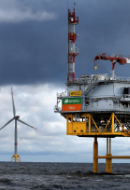
Innovation in renewables
We innovate to improve the efficiency of our renewable assets.
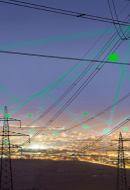
Innovation in networks
Driving digitisation to build a more flexible electricity system
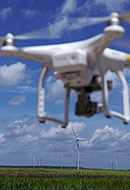
Technology innovation
Focused on improving our service and product efficiency and productivity.
Did you see the application of your technology in this challenge clearly from the beginning?
SSM had previous experience both in the power sector and with other coastal industrial plants that share certain similarities and issues. The company also has experience in inspections of hydropower plants located on riverbeds.
As we are focused on the niche of inspection and cleaning of flooded confined spaces, this challenge is aligned with both our expertise and our market approach. In terms of teleoperated systems for cleaning and dredging, the company has extensive experience, including developments such as RetroROV External link, opens in new window. or Toolbot.
External link, opens in new window. or Toolbot.
Advantages of inspection and cleaning of large pipelines using ROVs
-
1 Risk reduction
Pipe diameters range from 1 to 4 metres, usually closer to one metre. Divers are exposed to risky situations when diving in these conditions.
-
2 Shorter time
Inspection time constraints are removed with regard to the use of divers, who have to take turns to surface.

-
3 Increased image accuracy
Diver visibility reaches less than 10 cm when chemicals are used to combat biofouling. The ROV's pipe profiling sonar achieves accurate quantification of sediment accumulation despite water turbidity.
-
4 Better positioning
The location data obtained with the DVL (Doppler Velocity Logging System) is matched with the sonar images to produce an accurate model of the pipeline.

-
5 Usability of data
The 3D data that the ROV sends to the client allows the space to be measured and analysed in detail for predictive maintenance of the installation.
 SEE INFOGRAPHIC: Advantages of inspection and cleaning of large pipelines using ROVs [PDF]
SEE INFOGRAPHIC: Advantages of inspection and cleaning of large pipelines using ROVs [PDF]
What specific functionalities does your ROV need to carry out pipeline inspection work in combined cycle plants?
Regarding the vehicle:
The access mouth to the pipeline has a restricted space of one metre in diameter, which imposed some limitations on the overall size of the vehicle, as well as on the type of tools that could be used. The dredging equipment developed, SOLEA, is a tracked vehicle in order to be able to move under the expected conditions.
Regarding the images:
Due to the near zero visibility caused by the large number of particles in the water, a normal underwater camera would not be adequate to visually document the findings properly, so pipeline-specific sonar equipment such as the Imagenex pipeline profiler was selected.
Regarding positioning:
The confined and narrow spaces combined with zero signal penetration or reception made us rule out the use of any form of GPS or USBL positioning systems for the task. For this reason, we integrated a DVL (Doppler Velocity Logging system) from WaterLinked.
Would the deployment of ROVs for this work eliminate the use of divers or are they complementary systems?
The general idea with the application of robotics in cases like this is to minimise risk situations for people; there may be situations where divers are required, but the integration of a vehicle like SOLEA into the plant's recurring processes will have a dramatic impact in this regard.
The main advantages of doing this work using ROVs are:
-
Reducing risks to people
-
Elimination of time limitations with regard to the use of divers
-
Cost reduction
-
The usability of the data provided to the customer in 3D, with the ability to measure and analyse in detail allowing for predictive maintenance of the installation.
What is the biggest challenge you have encountered and what has motivated you most about the project?
The biggest challenge is to find a single versatile solution to suit the different sizes, materials and cross-sections of pipes and spaces to be cleaned, all using today's reduced pipe access methods.
Our main motivation is the one that defines us as a start-up, that is, to look for solutions to global and scalable problems. In this case the challenge is complex and we are confident that we can scale this solution after having this opportunity to work with Iberdrola.
What is SSM's business purpose in the short/medium term?
Our medium-term goal is to validate the concept and grow together with Iberdrola to incrementally add new capabilities to the vehicle, so that it is as modular and adaptable as possible for their different plants with the same needs. Our goal is to be commercially available with the solution from 2024 and to scale it up.




